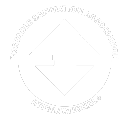Having your septic tank pumped and cleaned regularly is essential to avoid major septic issues. It also ensures that you can continue using your plumbing as needed. If you let your septic tank get too full, wastewater can back up inside your house whenever you flush the toilet, take a shower, or do laundry or dishes. We’ll explain the various factors that can affect how often a septic tank needs to be pumped as well as the signs that indicate it’s time to have your tank pumped.
Septic Tank Pumping Recommendations
Most septic tanks need to be pumped and cleaned out every three to five years on average. However, it really depends on how much water and solid waste goes into the septic tank. If only a few people use the toilets in the building every day, you’re probably fine just getting your septic tank pumped every five years or so. If the septic system gets much more daily use, it’s best to get the tank pumped every two to three years.
While how often your toilets are used definitely matters, what makes an even bigger difference is the amount of other solids that are flushed. Septic systems are designed to accommodate only toilet paper and human waste, which are quickly broken down by the bacteria inside the septic tank. Other solids like tissues, paper towels, wet wipes, and feminine hygiene products can take an incredibly long time to break down. Flushing them down the toilet will cause your septic tank to fill up more quickly and need to be cleaned more often.
Putting lots of chemicals down toilets and drains will also typically result in the need for more frequent pumping. The reason is that bleach and other chemicals can kill off much of the bacteria inside the septic tank. When this happens, it will greatly slow down the rate at which all solids in the tank get broken down. While the bacteria colony will slowly recover over time, it takes quite a while for chemicals to get fully flushed out of the septic tank. So, if you continue putting more chemicals into the system, the bacteria colony won’t be healthy enough to properly break down the waste in the septic tank, and the tank will quickly fill up with solids.
Deciding When to Have Your Septic Tank Pumped
Ideally, you should have your septic system inspected at least every three years to ensure the tank never gets too full. Regular inspections are also important for catching any potential issues before they require expensive repairs.
There are also a number of signs that typically indicate a septic tank is full or there is some other issue with the septic system. The most obvious sign that your septic tank is full or the system is clogged is if sewage starts backing up inside and overflowing out of floor and shower drains. Luckily, you will almost always notice some other signs before the tank gets so full that it leads to sewage backups. For instance, your sinks, showers and toilets will typically start draining more slowly when your septic tank starts to near its total capacity. You’ll also usually hear gurgling noises coming from your plumbing fixtures whenever you use them.
Another sign that it’s time to have your septic system inspected is if you start smelling an obvious sewage odor in the vicinity of the septic tank or drain field. Similarly, standing water or overly wet soil in the area around the septic tank or drain field typically indicates that the septic tank is full or the system isn’t working correctly. One last thing to watch out for is overly lush and green vegetation around the tank or drain field since this almost always indicates that water and waste are leaking out.
Salina Septic Service is a family-owned company with years of experience providing expert septic services in Salina and the surrounding areas. We’re proud to be the area’s top choice for septic pumping, cleaning and inspections, and we can also help with your septic system installation, repair and maintenance needs.
Contact Salina Septic Service today to have your septic tank pumped and cleaned or schedule any other septic system service.





